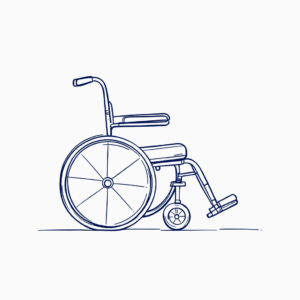
The rapid advancement of AI technology over the past few years has been extraordinary. From powering smart assistants to revolutionizing accessibility, there are countless examples of how AI is positively impacting the lives of people with disabilities. In my own work as a web developer, AI tools have become invaluable—saving me countless hours by automating repetitive coding tasks. The excitement around AI today reminds me a lot of the internet boom in the late ‘90s, full of promise and transformative potential. But, just like any revolutionary technology, AI brings with it challenges and pitfalls that we must be mindful of.
Just ask ChatGPT:
Prompt: “How are social attitudes and biases reflected in AI generated images?”
Answer: “AI-generated images often reflect and amplify the social attitudes and biases embedded in the data used to train these systems. These biases are not random but are deeply rooted in societal stereotypes, cultural norms, and historical inequalities.”
AI Image Generation and Disability Representation
Recently, I’ve been experimenting with image generation tools like DALL-E and Ideogram. These platforms are both fun and creatively inspiring, allowing users to bring their ideas to life visually with just a few prompts. However, through my exploration, I’ve run into a significant issue: generating accurate images of people in wheelchairs is surprisingly difficult. The results often feel off, unrealistic, or simply fail to represent wheelchair users authentically.
This problem points to a deeper issue in the data used to train these AI models. It’s not surprising when you consider how rarely people with disabilities are represented in positive, everyday imagery in our culture. Only a tiny fraction of images on the internet or in mainstream media feature individuals in wheelchairs—and when they do, it’s frequently actors who aren’t actually disabled. As a result, the AI models trained on this data reflect and amplify these biases, failing to accurately depict real wheelchair users.
Introducing “AI Wheelchair a Day”
To shine a light on this issue, I decided to start a project called “AI Wheelchair a Day.” My goal is simple: for at least 30 days, I’ll generate and share an AI-created image of a person using a wheelchair, posting the results here and on my social media accounts. By tracking and reflecting on the images produced, I hope to uncover trends and highlight the current limitations.
I’m interested to see what patterns emerge—and to contribute, in a small way, to the push for more inclusive and accurate imagery in AI-generated content.
